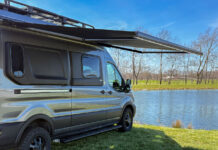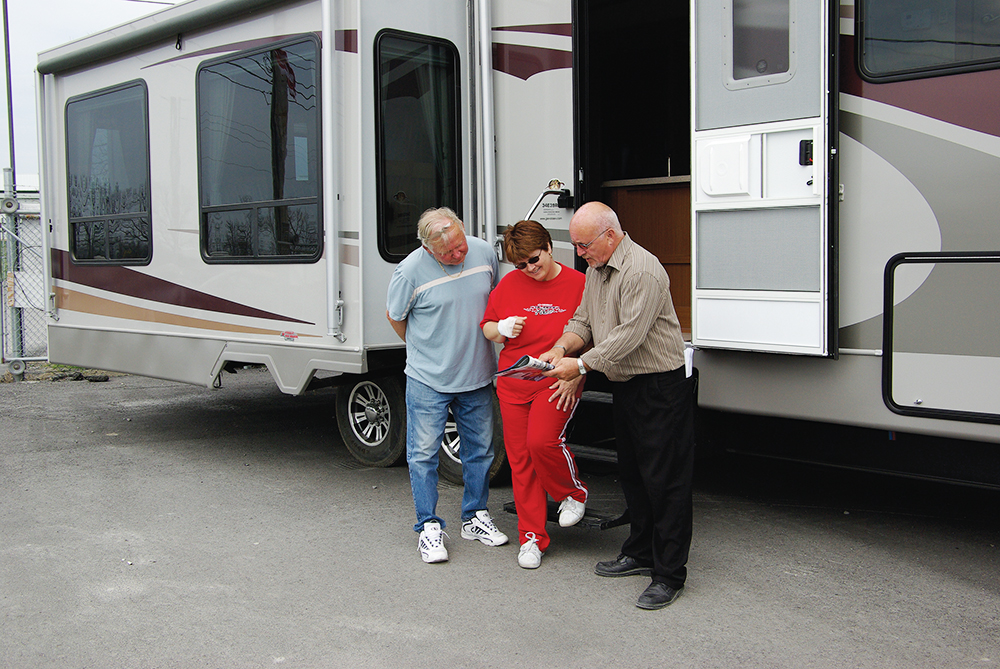You have just bought a new or used RV – Does it have a warranty?
What is a warranty? A manufacturer’s warranty is an assurance to the purchaser that a product is free from defects. The warranty also provides a promise to repair or replace the product if this is not the case. Warranties are not intended to cover wear and tear of components.
An extended warranty is the same, but applies for defects that may arise for some period after purchase. Extended warranties cost extra and are often sold separately from the products in question.
All new RVs come with a factory warranty to cover defects in materials or workmanship during an initial period. There may be different lengths of time for coverage on each section of an RV. A new engine may be covered for five years or 60,000 miles, where the suspension and steering may only have protection for two years. Appliances such as furnaces, TV’s or air conditioners may have a shorter period. During this warranty period any defects in manufacturing that exist should show up so that they may be corrected by the factory or selling dealer.
I always recommend that you go for a short trip after picking up your RV. Some dealers even have an area where you can spend your first night in your new purchase before heading home. It is easier to get some things fixed under warranty when you are not 300 miles from the dealer on that trip of a lifetime.
If you are purchasing a unit that has some experience (it may already have been to Florida and back), the dealer will have checked out everything on the unit to sure that it works. After that the warranty will cover 50% of the cost of parts and labour for thirty days. You pay the other 50%.
When a dealer sells a used RV, he may inform the customer that the purchase is “as is” meaning that the customer should not expect any service or repairs under any warranty. In other words, you are buying the product at your own risk. Be sure that it is a “good buy” – if it doesn’t work properly, it can be an expensive problem.
Many RVers often purchase their new RV from a dealer in another town to be able to get their choice of brand and floor-plan. When you need warranty service, you have to return to the selling dealer or another dealer who sells the same product. A common complaint from RVers is that they cannot get warranty service when they are on holiday. The dealer looks after his own customers first and then fits the traveller into his schedule, often after a few days. This can have disastrous effects and interrupt your holiday.
Many dealers in Canada are members of a mutual organization called “RV Care” that allows them to take care of each others customers, as if they had purchased from them. At this time in Canada, there are sixty-one affiliates in the RV Care Network. They are also joined by over 100 locations in the USA who are members of the Priority RV Network.
Manufacturer’s warranties are often not valid from one country to another. When we bought our first motorhome, we found that it was built on an American chassis from one company and an engine by another. All serial numbers were registered in the USA making it difficult at times to access replacement parts under warranty in Canada.
Your electronic components like televisions and microwaves may have a manufacturer’s warranty that doesn’t protect you at home in Canada even if the same product is available for sale in Canada.
At the time of the original purchase, your dealer may offer what is called an extended warranty, an insurance policy that will cover future repairs on specific items for a set period of time. Extended warranties usually cost extra and are sometimes based on a percentage of the cost of the item. The cost of extended warranties will depend on the age of the unit, how many things that you want included in the coverage and the length of time the warranty will last before it expires. You are basically taking a gamble that the cost of the policy will be less than the cost of any future breakdowns. You should find out about the terms of this kind of warranty before you buy, particularly if the item you’re buying is of significant cost to you. Do they cover parts and service, or just one or the other?
The basic package will often cover just the engine and drive-train. Additional items could include the steering, brakes, suspension, cooling system, water heaters, furnace, air conditioners, oven and LP gas system for extra premiums. The more things that you want covered, the greater the premium.
These warranties have terms and conditions which may not match the original terms and conditions. For example, these may not cover anything other than mechanical failure from normal usage. Exclusions may include commercial use, “acts of God”, owner abuse, and malicious destruction. They may also exclude parts that normally wear out such as tires and lubrication on a vehicle. (The Office of Consumer Affairs at Industry Canada, as Secretariat for the Consumer Measures Committee, is responsible for maintaining the Canadian Consumer Handbook).
When you have a breakdown on the road, it is essential that you call the provider of the extended warranty to obtain authorization for repairs before any work is started. Many extended warranty providers have preferred locations where warranty work can be completed, and unless you call first, the repair may not be reimbursed.
This type of extended warranty has been provided by the automotive companies for a long time to cover your engine and drive mechanism after the original factory warranty runs out. This type of warranty can be upgraded to also cover items like the water heater, refrigerator, holding tanks, air conditioners, heating systems, TV’s and VCRS. And will also cover the engine, transmission, axles, suspension, steering and braking systems.
It is called Named Component Coverage. When you receive your policy, it will show a list of all covered components that were installed by the factory or dealer at the time of the original sale. If you add features after the sale, these items will not be covered. For example, if your TV and VCR were installed as part of a factory package, repairs will be covered if they break down within the coverage period. If you bring along your TV and VCR from the house – they are not covered.
Extended warranties are conditional on you maintaining the vehicle to the manufacturer’s standards and keeping records of the service that has been done. This usually means changing the oil every 4000 miles, lubricate the suspension and steering linkage, and change the transmission fluids every 12,000 miles or once a year. The loss of air conditioning cooling fluid, replacement of brake pads, belts, and hoses are considered wear and tear. They are not covered by any warranty.
The balance of your extended warranty (up to seven years from the date of purchase of the engine or 85,000 miles) can be transferred to a new owner for a small administration fee to cover the paperwork if you decide to sell your unit. This makes your used unit easier to sell and then you can purchase a new extended warranty for your next RV.
This is not a theft policy! It is mechanical liability policy. Extended warranties are like insurance policies. You pay the premium, and the company pays for repairs to your unit IF it breaks down. Not if it wears out!
For the last 24 years, Garth Cane has been the Technical Director for RV Lifestyle Magazine. He is a member of the Automotive Journalists Association of Canada, was professor of the Apprenticeship program for RV Service Technicians in Ontario. He volunteers as Chairman of the CSAZ240 and the Recreation Vehicle Safety and Education Foundation.






















